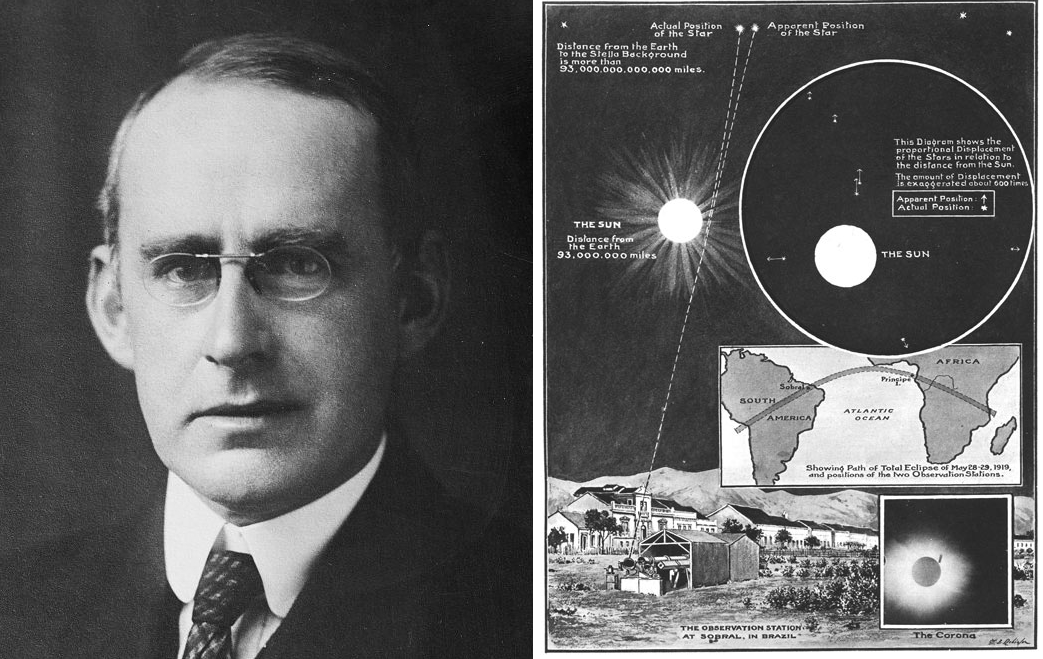The name Eddington resonates deeply in the realms of astrophysics and cosmology, a figure whose contributions have shaped our understanding of the universe. This article delves into the life, achievements, and enduring impact of Sir Arthur Eddington, a prominent physicist and astronomer known for his pioneering work in the early 20th century. From his early life to his groundbreaking research, we will explore the various facets of his career and how he has influenced modern science.
Arthur Eddington's legacy is not merely confined to the scientific community; it also extends to the broader public, inspiring generations to ponder the mysteries of the cosmos. As we navigate through Eddington's journey, we will highlight key events and milestones that define his career, emphasizing his expertise and authority in the field.
In this comprehensive article, we will examine Eddington's contributions to the theory of relativity, his efforts in promoting science during a tumultuous time, and his role in popularizing complex scientific concepts. Join us as we uncover the life of a man who not only understood the universe but also endeavored to share that understanding with the world.
Table of Contents
- Biography of Arthur Eddington
- Early Life and Education
- Scientific Contributions
- Eddington and the Solar Eclipse of 1919
- Philosophy of Science
- Books and Publications
- Legacy and Influence
- Conclusion
Biography of Arthur Eddington
Sir Arthur Eddington was born on December 28, 1882, in Kendal, England. His father was a minister in the Society of Friends, and his mother was a teacher. The influence of education and religion played a crucial role in shaping his early thoughts and ideas.
| Personal Data | Information |
|---|---|
| Name | Sir Arthur Eddington |
| Born | December 28, 1882 |
| Died | November 22, 1944 |
| Field | Astrophysics, Cosmology |
| Notable Works | The Internal Constitution of the Stars, Relativity Theory |
Early Life and Education
Eddington exhibited exceptional intellectual ability from a young age. He attended the University of Manchester, where he studied mathematics and physics. After completing his degree, he earned a scholarship to Trinity College, Cambridge, where he would later become a prominent figure.
During his time at Cambridge, Eddington was exposed to the works of leading scientists, including Albert Einstein. This exposure profoundly impacted his scientific outlook and future endeavors.
Scientific Contributions
Eddington's contributions to physics and astrophysics are vast. He played a significant role in establishing the theory of stellar structure, which sought to explain the internal processes of stars.
Stellar Structure and Evolution
His work in this area laid the groundwork for our understanding of how stars generate energy through nuclear fusion. Eddington's equation for stellar stability remains a cornerstone in astrophysics.
Relativity and Cosmology
One of Eddington's most notable contributions was his work in promoting Einstein's theory of relativity. He was one of the first scientists to understand and support this revolutionary concept, which fundamentally changed our understanding of space and time.
Eddington and the Solar Eclipse of 1919
The solar eclipse of May 29, 1919, marked a pivotal moment in the history of science. Eddington organized an expedition to observe the eclipse, intending to test Einstein's theory of general relativity.
The results of the expedition confirmed Einstein's predictions regarding the bending of light around massive objects, solidifying Eddington's status as a leading scientist and bringing widespread attention to relativity.
Philosophy of Science
Eddington was not only a physicist but also a philosopher of science. He believed that the nature of reality is complex and that scientific theories are merely approximations of the truth.
Two Tables of Reality
In his work, Eddington often referred to the concept of "two tables of reality," distinguishing between the physical world and the world of experience. This philosophical stance encouraged a more profound contemplation of how we understand science and its implications.
Books and Publications
Throughout his career, Eddington authored several influential books that made complex scientific concepts accessible to a broader audience. Some of his notable works include:
- The Internal Constitution of the Stars
- Relativity Theory
- The Nature of the Physical World
- Science and the Unseen World
His writings not only contributed to scientific discourse but also inspired many to pursue careers in science.
Legacy and Influence
Sir Arthur Eddington passed away on November 22, 1944, but his legacy continues to resonate in the fields of astrophysics and cosmology. He is remembered not only for his scientific contributions but also for his ability to communicate and popularize science.
Many contemporary scientists owe their inspiration to Eddington's work, which laid the foundation for future research in understanding the universe.
Conclusion
In summary, Arthur Eddington's life and work encapsulate the spirit of scientific inquiry and exploration. His contributions to astrophysics, particularly in the context of the theory of relativity and stellar structure, have left an indelible mark on the scientific community.
As we reflect on his legacy, we encourage readers to engage with the universe's mysteries, whether through further reading or by delving into the realms of science and philosophy. Share your thoughts in the comments below and explore more articles on our site to continue your journey into the wonders of science.
Thank you for joining us in this exploration of Eddington's life and contributions. We hope you found this article informative and inspiring, and we look forward to welcoming you back for more insights into the world of science.


